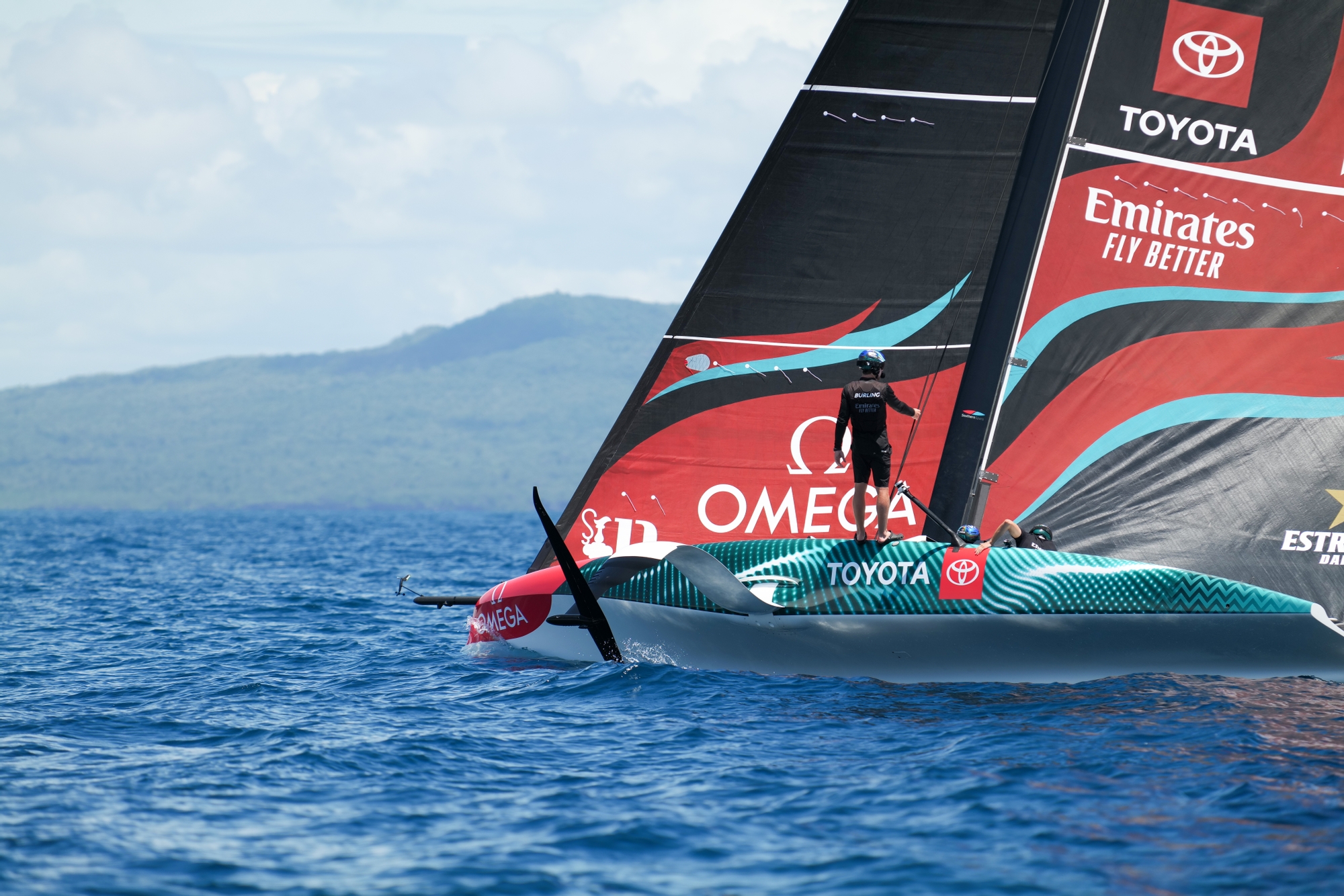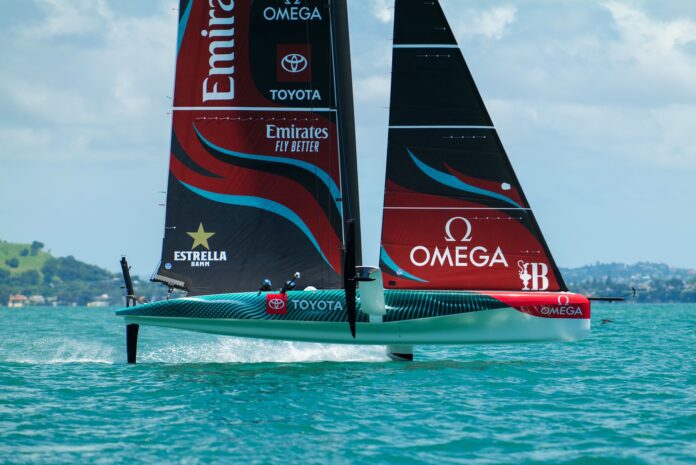Emirates Team New Zealand marked a significant milestone in their America’s Cup journey by commissioning their highly anticipated new foil on a picturesque day in the Hauraki Gulf. Against the backdrop of a serene summer’s day, with temperatures soaring to 23 degrees Celsius, the team embarked on the inaugural sailing session, navigating wind conditions ranging from 5 to 13 knots.

Dockside, the pre-checks showed the foil to have a full-length flap that extends right out to the upturned tips and the most exquisite of detailing around the underside of the bulb connecting through to the wing itself. With a relatively flat underbody of the bulb, tapering upwards to the join, the leeway-reducing sidewalls are not quite as extreme as we saw on the latest NYYC American Magic iteration, but the aggressive bulb tip design lends itself more to a military application than marine in its form. The five fences on the outside of the foil arm are sculptured beautifully to the arm design and when wet, the accentuation of the moulding is clearly seen. This is high crafting from the North Shore build team, and one suspects it’s success will all be in the detailing as this Cup cycle sees most teams down this end of the foil design route.
On the water, it was nigh on impossible to visually see differences in the foils from side-to-side from the recon boat but what the Kiwis certainly haven’t lost in the new design is their stability in flight and their ability to play with ride height and pitch at will. On port tack, with Nathan Outteridge driving on the new foil, a favoured mode seemed to be bow down and low to the surface where the LEQ12 sweet spot can normally be found.

Through the tacks and gybes, it was the usual high co-ordination and accurate trims that brought the boat through although a few down-range splashdowns occurred when the J3 was struggling for gas towards the end of the session. Interesting to see the crew dynamic onboard the LEQ12 with plenty of interaction as the team looked for the differences and discussed cant angle with crews swapping to the windward sides, sitting on the foil arms or deep in discussion – with so much engineering experience onboard fused with pure sailing talent, this is a group that revels in the details.

Speaking afterwards, following a two-and-a-half hour session on the water, Peter Burling was giving little away but seemed pleased with the steps the whole team are making saying: “We obviously have different foils on side-to-side so we’re just trying to compare the differences, subtle little details and obviously something that’s very important for the long term is to get the fastest foils under the boat so we’re still pushing along trying to figure a few things out… all the foils have to go across the wind range, the America’s Cup’s evolved over the last two years and with the foil we just get one and it’s got to do everything so for us it’s really about trying to cover everything well and not have too many weaknesses. Pretty happy with it.”

The team will be keen to push this new foil configuration through the whole variety of wind ranges with Pete saying: “Well here obviously we don’t get the swell that we do in Barcelona very often, so you know whenever that comes in we try and make the most of it but yeah you’ve gotta be good across the board and you know it’s been really nice to get some lighter stuff and some more mid-range today and we will put the boat back in the shed and keep pushing forward later in the week.”

The team to watch for sure. Emirates Team New Zealand are into the New Year with new tech and new impetus. (Magnus Wheatley)
On-Water Recon Report – Emirates Team New Zealand: Day 54.
Docked out at 1210, towed to Mechanics Bay to hoist the main. M2-3 and J3.
Wind was 11-12 knots from 82, sea state flat to small 1 foot wind against tide chop.
1235 started sailing and tacked upwind to Browns Island where they stopped at 1253.

There didn’t look to be any noticeable sailing difference from tack to tack. Upwind speeds varied between 20 and 30 knots on both tacks. Then continued sailing upwind to The Noises chain of islands, where the wind continued to drop as they went, 7-9 knots after Rakino and then 5-7 knots under The Noises Islands.
1340 entered out into the Gulf, wind was 5-7 knots with a smooth seas and a long period 1m swell.
1342 around 10 seconds after a gybe the boat crashed down into the water.
1358 they tried to get sailing again and could not get on the foil on either tack.
1405 chase boat towed them up on the foil. Wind built to 11-13 knots by Rangitoto lighthouse.
1458 dock-in






